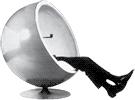RFLink
RFLink R48 is pre-installed on the gateway.
RFLink Protocol describe what is detected.
Connect gateway via OpenBSD.
doas cu -l cuaU0 -s 57600
Connected to /dev/cuaU0 (speed 57600)
20;00;Nodo RadioFrequencyLink - RFLink Gateway V1.1 - R48;
20;01;MiLight=ON;
20;02;FineOffset;ID=0014;TEMP=0093;HUM=67;
20;05;TriState;ID=02aa2a;SWITCH=2;CMD=ON;
20;07;NewKaku;ID=02a4beb2;SWITCH=1;CMD=ON;
20;7B;Xiron;ID=1401;TEMP=0085;HUM=53;BAT=OK;
20;7F;Digitech;ID=02a0;TEMP=0123;BAT=OK;
20;5A;Firstline;ID=00a0;TEMP=00bf;
20;8C;Pollin;ID=005d;TEMP=0011;RAIN=05fa;BAT=LOW;
...
The gateway expects CR/LF after every line, but cu only interpret Enter as CR.
CTRL-M - CR
CTRL-J - LF
So to send commands back directly with CR/LF termination you need to add an extra LF.
10;PING;<Enter><CTRL-J>
20;04;PONG;
You should also be able to use e.g. minicom or screen.
Sensor board
NDSensors433SensorBoardUsersManual.pdf
Sensor available from tindie.com or directly from NDSensors
Weather Station(s)
Ambient Weather WS-1173 and its outdoor sensor WH2F seems to be picked up as.
20;2C;FineOffset;ID=0014;TEMP=00ca;HUM=49;
This means.
0xCA = 202 = 20.2 C
49% relative humidity
Buy more here.
Another weather station seems to be from Alecto.
20;26;AlectoV3;ID=3014;TEMP=80b7;HUM=48;BAT=OK;
That one report -18.3. Inside a freezer?
And yet another Xiron/Auriol.
20;7B;Xiron;ID=1401;TEMP=0085;HUM=53;BAT=OK;
Custom ATtiny84 with DHT22
Custom firmware from NDSensors
20;58;Oregon TempHygro;ID=2D0F;TEMP=00ee;HUM=52;HSTATUS=0;BAT=OK;
Controlling Telldus Switches
I tried to control the switches from the telldus web ui. Then I got the following ...
# kök
20;15;NewKaku;ID=004a4b52;SWITCH=1;CMD=ON;
20;16;NewKaku;ID=004a4b52;SWITCH=1;CMD=OFF;
# mat
20;18;NewKaku;ID=02a4beb2;SWITCH=1;CMD=OFF;
20;19;NewKaku;ID=02a4beb2;SWITCH=1;CMD=ON;
# tv
20;1C;NewKaku;ID=03cdb752;SWITCH=1;CMD=ON;
20;1D;NewKaku;ID=03cdb752;SWITCH=1;CMD=OFF;
So from this I could get the ID for each device.
So to control from RFLink i could do the following.
10;NewKaku;004a4b52;1;ON;<Enter><CTRL-J>
20;21;OK;
And
10;NewKaku;004a4b52;1;OFF;<Enter><CTRL-J>
20;23;OK;
Works fine!
NDDevices custom 433 MHz sensors
I use Arduino IDE to program the sensors. Some gotchas.
- Install ATTiny Arduino Core in IDE
- Newer version seems to be ATTinyCore
Use e.g. an USBAsp AVR programmer to program via IDE.
I have connected USBasp as follows to a pogopin connector.
ISP as pogopads on the board:
+-------+
GND | () () | RST
MOSI | () () | SCK
VCC | () () | MISO
+-------+
"433"
USBasp 10 pin:
(assumed female connector on board)
+-------+
MOSI | () () | VCC
NC | () () | GND
RST () () | GND
SCK | () () | GND
MISO | () () | GND
+-------+
Note that the male connector from the USBasp match the female board connector described above.
Set the following parameters in Tools menu:
Board: ATtiny 24/44/84
Processor: ATtiny84
Clock: Internal 1MHz
Programmer: USBasp
Write a simple program:
/*
Blink - Turns on an LED on for one second, then off for one second, repeatedly.
*/
#define LED 4 // PA4 / SCK = pin 9
// the setup routine runs once when you press reset
void setup() {
// initialize the digital pin as an output.
pinMode(LED, OUTPUT);
}
// the loop routine runs over and over again forever
void loop() {
digitalWrite(LED, HIGH); // turn the LED on (HIGH is the voltage level)
delay(1000); // wait for a second
digitalWrite(LED, LOW); // turn the LED off by making the voltage LOW
delay(1000); // wait for a second
}
Upload sketch via Sketch / Upload Using Programmer.
It is possible to change internal clock to 8 MHz via Burn Bootloader. See Programming ATtiny84 / ATTiny44 with Arduino Uno.
Protocols
References
- ATtiny24/44/84 Datasheet
- rfxcom manual
- RTL 433 - Software defined radio software which undestand a lot of devices.
- ATtiny 84 WDT sleep
- Demystifying GPIO
- Programming AVR on OSX
- SensiEdge
- YARDStickOne
- Si1100 radio kit
- SNMP ethernet digital io and relay over USB
- Modulation Choice
- SiliconLabs EzRadio vs. Ti SimpleLink
- Antenna comparison
- Programming ATtiny84 / ATTiny44 with Arduino Uno
- ATTiny Arduino Core
- CC1101 USB Lite module v3 and Networked Module Carrier V2 and pigator and other
- DORJI - LoRa modules with AT interface
- Door Switch using X10RF
- X10RF
- PIR sensors
- RC Switch Library - PT2262 encoding or EV1527 encoding of data
- 433 bit encoding
- Push-Button On/Off Switches, Techoblogy
- Security in a Radio Controlled Remote Switch
- ATtiny Low Power
